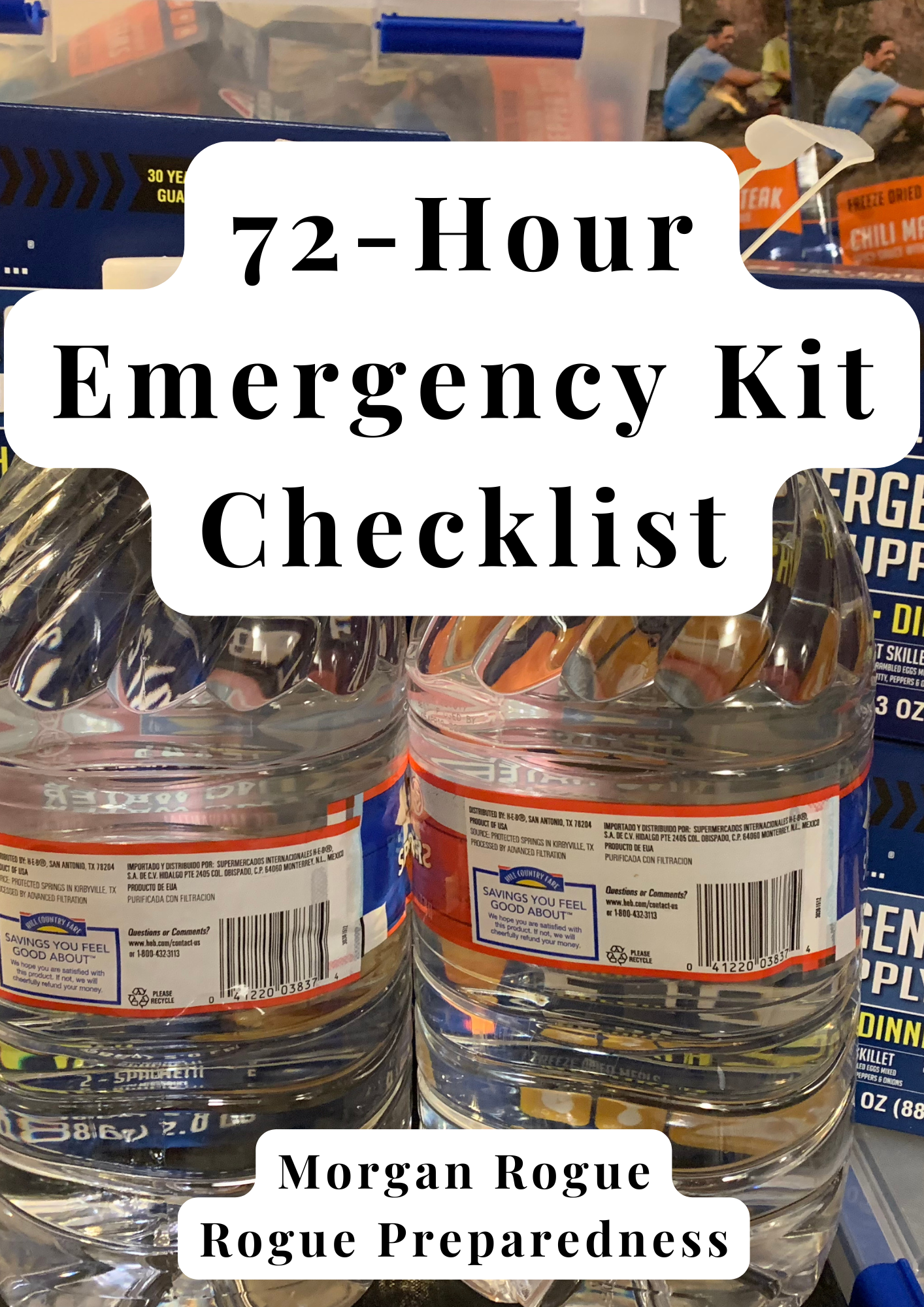Emergency Preparedness
How to Rotate Your Emergency Food and Water Without Waste
You’ve started storing food and water — great! But now you’re wondering: How do I make sure it doesn’t go bad before I ever need it?
That’s where rotation comes in.
You should be rotating your food and water naturally in everyday life. Rotating your emergency supplies doesn’t have to be complicated or time-consuming or make you feel like you’ve wasted a bunch of money, space and time.
Here’s a simple system that will keep your storage organized and efficient year-round.

Step 1: Follow the “First In, First Out” Rule (FIFO)
This is the golden rule of food rotation.
- The oldest food gets eaten first.
- The newest food goes to the back.
Every time you buy new canned goods, dry foods, or bottled water, place them behind what’s already there. That way, the items with the shortest shelf life get used before they expire.
Step 2: Store What You Actually Eat
One of the biggest causes of waste is stocking foods you never touch.
If your family doesn’t like lentils, don’t buy 20 pounds of lentils “just in case.” Store what you already enjoy — canned soups, pasta, rice, beans, peanut butter, oats, or snack foods your kids will actually eat.
That way, rotating through your food storage feels natural — you’ll use it up during normal, everyday meals, instead of tossing it later.

Step 3: Build Rotation Into Your Routine
Don’t treat food storage as a “set it and forget it” project. Make it part of your normal rhythm.
- Monthly: Rotate water, use it for everyday purposes, place some in the freezer, etc.
- Quarterly: Wipe down shelves and non-perishable foods to keep critters at bay.
- Every 6 months: Review your stored food and update your inventory.
Tip: Add a recurring reminder to your calendar so you never forget.
Step 4: Keep an Inventory Sheet
An inventory helps you track what you have and what needs replacing.
Include:
- Item name
- Quantity
- Best buy date
- Notes (e.g., “Rotate next month,” “Low on rice”)
This simple list saves time, reduces overbuying, and prevents surprises when you actually need to rely on your supplies. It also shows you holes in your preps. I once looked at how much coffee I had on hand and realized, through my inventory sheet, that I basically nothing. Well I wasn’t going to stand for that oversight. I rectified it immediately.
And you can have a balanced food and water setup with a steady inventory sheet.

Step 5: Rotate Water Safely
Water doesn’t technically “expire,” but containers and storage conditions matter.
- Store water in food-grade containers or factory-sealed bottles.
- Replace bottled water every 12–18 months or sooner if exposed to heat.
- If you use refillable containers, empty, clean, and refill them every 6 months.
- Store bottled water in the freezer; keeps freezer cooler and you can always take it out and use it for whatever.
- Use water bottles for electrolyte drink mixes.
- Use water bottles for road trips or kids soccer games.
- Store water bottles in your car for one month at a time, rotate frequently.
- Give the water to your pets or plants.
- Just drink it.
Step 6: Use Your Food Storage in Everyday Meals
The best rotation system is one that blends into your daily life.
- Make “prepper pantry dinners” once a week using stored items.
- Rotate canned goods into soups, stews, casseroles or one-pot meals.
- Keep a “use next” bin or shelf in your pantry for older items.
This not only prevents waste — it keeps your family familiar with your stored food.
Quick Checklist: Rotating Without Waste
Organization
- Use the “First In, First Out” rule
- Keep a food and water inventory list
Food Rotation
- Store what your family already eats
- Plan one pantry meal per week
- Replace older foods as you shop
Water Rotation
- Replace bottled water every 12–18 months
- Refill containers every 6-12 months
- Use older water for cleaning or plants
Routine
- Monthly: rotate water
- Quarterly: wipe down shelves
- 6 months: update inventory
Final Thoughts
Preparedness isn’t just about what you store; it’s about how you maintain it. With a simple rotation system, you’ll save money, make your storage space intentional, reduce waste, and ensure that your supplies are always fresh when you need them most.
Action: Choose one day this month to organize, inventory and label your food and water storage. A little effort now will make a big difference later.


